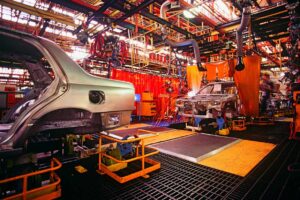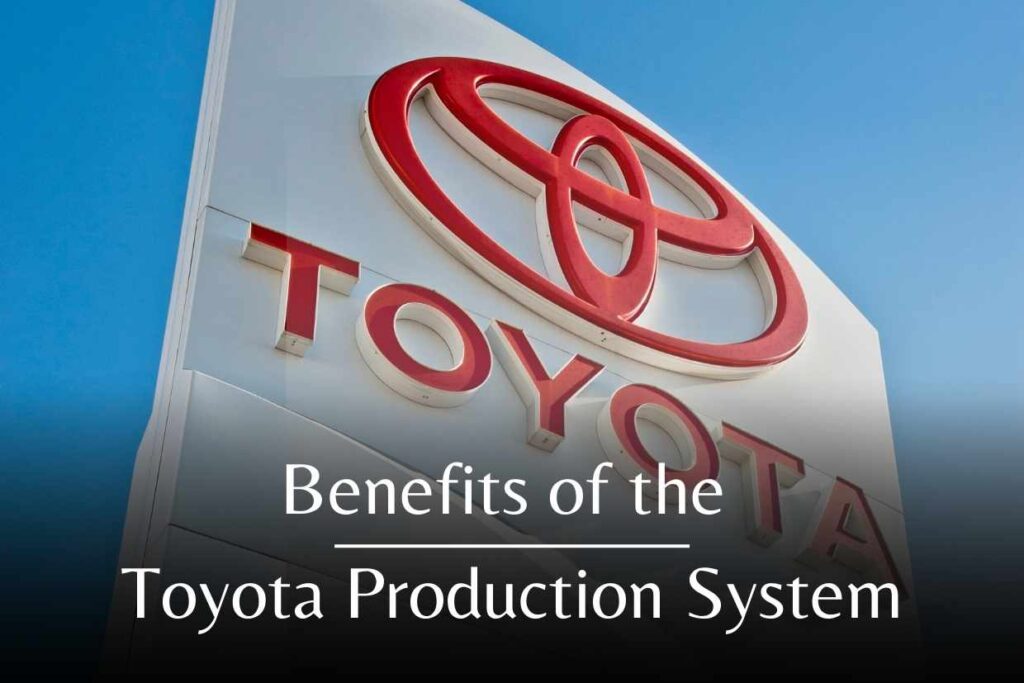Lean manufacturing is popular among all kinds of businesses as it is designed to define value from the perspective of the end customer, eliminate waste within the business, and continuously improve all work processes, purposes, and people. It also encourages shared responsibility and leadership while ensuring that each employee is an equal contributor.
Basically, Lean management is a long-term approach to management that focuses on continuous improvement and efficiency through small, incremental changes by eliminating waste.
What is Waste?

So, what exactly is defined as waste? According to Lean thinking, waste is defined as anything that your customer wouldn’t pay for. It is anything that doesn’t add value to any product, service, or feature. So, it’s essential to get rid of them and businesses of any size struggle with outrageous wastes of all kinds. Taiichi Ohno was one of the founding fathers of Lean manufacturing, and he identified three major areas that have a negative impact on the work process.
- Muda – Waste.
- Mura – Unevenness.
- Muri – Overburden.
Every activity that happens in a company is divided into two groups, value-added activities and non-value-added activities or wastes. Unfortunately, 95% of the activities are non-value-added activities, while only 5% of activities are value-added in a business. Since customers are only willing to pay for value-added activities, the companies that are striving to become Lean organizations have waste elimination at the top of their list.
There are 8 wastes of lean manufacturing identified by lean practitioners. Most of them have similarities, while some vary. Certain waste types are easy to identify, while others make them difficult and bring problems to the whole company. Having a better understanding of those 8 wastes of Lean manufacturing will help your company to thrive success as a lean organisation, effectively eliminating waste.
The followings are the 8 wastes of lean manufacturing, which are given by the acronym DOWNTIME.
- Defects.
- Over-production.
- Waiting.
- Non-utilized talent.
- Transportation.
- Inventory.
- Motion.
- Extra processing.
Have an insight into all of these 8 wastes of Lean manufacturing, what leads them, and countermeasures that should be taken to reduce each of the 8 wastes of lean manufacturing from harming your company.
-
Defects
Defects are the first waste of the 8 wastes of lean manufacturing. When the product is not fit for usage, defects arise, adding additional costs to the process and further it unable to deliver any value to the customer. This also causes the production team to either rework or scrap the product.
If simply defined, defects are bad products or services that must be scrapped, reworked, or fixed.
What leads to defects?
- Complexity in production processes.
- High level of inventory.
- Lack of mandatory equipment or tools.
- Discordant manufacturing processes.
- Poor skill training of the employees.
- Damages occur when transporting because of poor layouts.
- Needless handling in the process.
Following are a few countermeasures that should be taken to reduce defects.
- Figuring out and focusing on the most repetitive defect.
- Designing a process that can detect anomalies in the system.
- Redesigning the operations without defects.
- Using standardised assignments to ensure a compatible defect free manufacturing process.
-
Over Production
Manufacturing a product or an element of the product before the demand of the customers is known as overproduction. Mostly this type of waste happens when there is an idle worker, resources, or time. This is known to be the ‘Just In Case’ way of working, and it is NOT a part of Lean management due to the following reasons.
- Prevents smooth workflow.
- Demand for higher storage costs.
- Ignore defects inside the WIP (Work in Progress).
- Require more capital expenditure to fund the production process.
- Require excessive lead time.
Additionally, over-produced products or quantities of products produced may not meet the customer’s requirements.
Instead, Lean principles follow the “Just in Time” philosophy. In simple words, it refers to the production of what you need, when it is needed, as much as you need without stagnation so that it flows. Therefore, it helps in eliminating waste and enhancing the efficiency of work processes.
Overproduction increases all the other waste becoming the most wasteful activity. For example, a large amount of food in restaurants is getting thrown away or overstaffed in retail stores. It uses up resources for something that gets wasted in the end. Another example is hospitals with more than enough beds than the region needs. Making extra copies and entering data into multiple systems separately are also overproductions that could happen in an office setting.
In every manufacturing production, thousands of reasons can cause overproduction. Improper planning and poor communication within the company as well as with the customers have the highest possibility of leading the manufacturing processes to overproduction. Moreover, when the team members are not able to understand their specific roles in the manufacturing processes, it creates confusion for everyone on the team, then they might end up producing more than the demand or spend time on off-target work.
The followings are a few countermeasures for overproduction in lean manufacturing.
- Using a “Takt Time”, which is the required product assembly duration that is needed to match the demand.
- Reducing set-up times to manufacture in small batches.
- Using a pull system or ‘Kanban’ system to control the amount of WIP. (It increases proper planning and good communication within the company).
-
Waiting
Another waste of 8 wastes of lean manufacturing is “waiting”, which can cause waste when people or processes need to wait for the next step. “Waiting time” is the result of unevenness in the production stations, and it may cause excess inventory and overproduction. Waiting for higher-level administration to review files, waiting for the computer to load a program, and waiting for needed materials to arrive are some examples of waiting. In a hospital setting, patients in the emergency room waiting for blood test results is also an example of waiting.
In a restaurant, guests waiting for the cutleries to be given to start eating the meal in front of them counts as a waste of waiting. In addition, contractors waiting for the materials to arrive wasting their time, and landscapers waiting for the sod to be delivered are some real events that could happen in outdoor manufacturing processes. Therefore, this type of waste should be reduced and eliminated effectively.
There are two types of waste in waiting,
- Idle workers.
- Idle equipment.
Some of the leading causes of waiting are given below.
- Incompatible work procedures.
- Lack of needed equipment or tools to proceed with the step.
- Lack of materials required to complete the step.
- Lengthy set-up times in between steps.
- Reduced effectiveness in machines.
- Reduced effectiveness in manpower.
- Poor resource maintenance.
- Poor time management.
- Lack of communication.
The following are the countermeasures that could be taken to reduce waiting.
- Improving continuous flow or single-piece flow.
- Using standardised work instructions to even the workload.
- Training employees to be skilful in various fields.
-
Non-Utilized talent
Perhaps this is the most damaging of the 8 wastes of lean manufacturing, and it is a crucial form of waste that is hardly recognised because it is often ignored or underemphasised. Unused human potential often results from management policies and styles that damage the employees’ contribution.
In manufacturing, when employees are not appropriately trained and do not know how to operate equipment in the right way or when employees are not given the right tool for the specific work, this waste can be seen.
Other than that, what causes human skills to be unutilised in a business?
- Insufficient training is provided to employees at every level of the hierarchy.
- The lost motivation of the employees.
- Lost creation.
- Employees are not challenged to come up with ideas to improve the work.
- Lack of teamwork.
- Poor time management.
- Employees are not given any opportunity to learn new skills.
- Employees are not given any opportunity to advance their skills.
- Employees are excluded from the process improvement of the company.
- Only selected employees are able to engage in positive change.
- Place employees in positions below their skills and qualifications.
The followings are the countermeasures to follow to avoid non-utilized skills.
- Proper training plan
- Hiring a competent workforce
- Giving the employees skill-based jobs
- Building good communication within each level of the hierarchy in the company
- Conduct programs that increase the motivation of the employees.
- Treat everyone equally
-
Transportation
Wastes in transportation are the unnecessary movement of raw materials, work in progress, or finished goods. In addition, poor office layout, excessive steps in the process, misaligned process flow, and a poorly designed system can cause transportation waste. Ordering supplies or products from distant suppliers when other closer options are available is an example of waste in transportation. Making the raw materials required for production easily accessible inside the factory is a way to reduce this type of waste.
Further, moving resources from one construction site to another construction site and transporting back the unsold products from the store to the warehouse are also transportation wastes. There are different types of transportation waste. Electronic transportation waste is one kind. It is in the field of information. For example, sending files back and forth via email instead of storing them in a central location. The followings are the countermeasures for avoiding this waste of lean manufacturing.
-
- Follow the continuous flow.
- Managing work-in-process (WIP) items.
- Needless handling of the materials should be avoided
- Build good communication with the people who have collaborated with your company.
-
Inventory
A product, raw material, work in progress, or finished goods quantities that go beyond supporting immediate need. These excessive inventories are often the result of the company holding Just-in-case inventories. Then they overstock themselves to meet the unexpected demand or to avoid protection delays. However, these excessive inventories often do not meet the customer’s needs. In return, they increase the storage cost and the deposition cost.
Tracking and controls that are incompetent, having an unreliable supply chain, and overproduction are the sources of inventory waste. Inventory wastes and overproduction wastes go hand in hand. When a product is overproduced, somehow or another, it has to be stored somewhere. Poor monitoring systems, misunderstanding customer needs, long set-up times, as well as unreliable suppliers are some other reasons that may cause inventory waste in an organisation.
Some examples of inventories in an office setting are shelves used to keep unused office supplies, piles of pre-printed forms, perishable or putrescible items that will easily get spoilt before they get used or sold, and unnecessary useless apps on the desktop of the employees. In a hospital setting, unnecessary bedside materials are also inventory wastes. The followings are the countermeasures for avoiding inventory waste in lean manufacturing.
- Following the Just-In-Time philosophy
- Following a One-piece flow
- Using a “Takt Time” that is the required product assembly duration to match the demand.
- Practising Kanban to control the amount of work in progress.
-
Motion
Motion waste is the unnecessary movement of people that does not add value. This includes the movement of employees or machinery, which is complicated and unnecessary. Motion waste can be caused by poor shop floor layout, isolated operations, or workstation congestion.
What leads to this waste of 8 wastes of lean manufacturing?
- Having unorganised workspaces.
- Following processes that are not standardised.
- Lack of understanding of the customer behaviour.
- Using failed plant layouts in processes.
- Lack of visual controls.
- Poor process documentation.
Having to make extra efforts to get the materials required, sifting through the inventory to search and find files needed, excess mouse clicks to go to the screen you expect, and multiple entries of data are examples of wastes that could happen in this type of waste in an office setting. Repetitive actions that do not add value to the customer, such as employees searching for missing tools or supplies or walking to get a tool or materials, are included in manufacturing motion waste. The followings are the countermeasures for avoiding motion waste in any business.
- Having a 5S working management system.
- Developing value stream mapping.
- Following a “One-piece” flow philosophy.
- Proper planning of the workload.
- Properly organising the workspaces.
- Placing needed resources near the production location.
8. Extra-processing
The additional process doesn’t add any value to the customer, and it is often one of the most difficult ways to detect and eliminate. Extra processing can complex simple tasks. When developers add more complexity to a product, task, or process than is needed to get the desired value, this waste of the 8 wastes of lean manufacturing happens. Whether it is doing more work, adding more elements, or following more steps in a product or service than what is demanded by the customers. Usually reflects on doing work with no additional value required by the customer. In turn, it increases the cost of the end product.
The followings are the countermeasures for avoiding over-processing.
- Comparing customer needs to manufacturing specifications.
- Simplifying the manufacturing process.
- Processing re-evaluation.
- Developing value stream mapping.
- Organising work.
- Prioritising correctly.
Summary.
Waste is anything that doesn’t transform a product or service into what the customer wants. Eliminating waste is one of the most vital concepts in Lean management as well as lean manufacturing. Therefore, having a good understanding of the 8 wastes of lean manufacturing will make it easier to identify the wastes within the business and minimise them as soon as possible. This blog will also give an insight into the causes of those wastes 8 wastes of lean manufacturing and the countermeasures that should be taken to avoid them.




